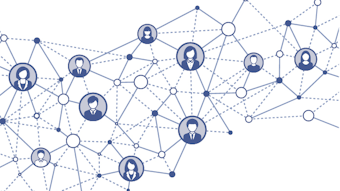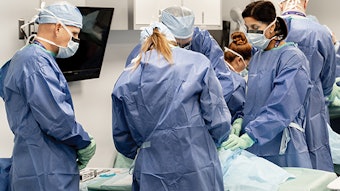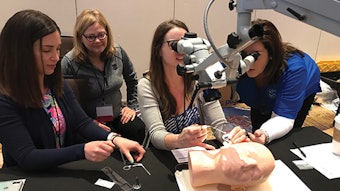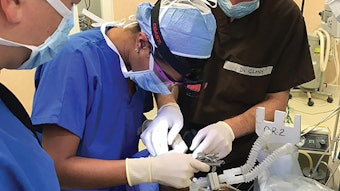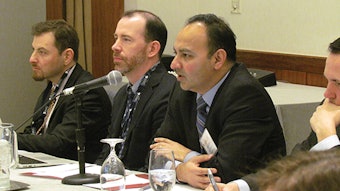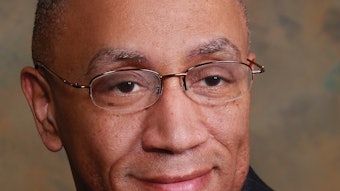Laryngology and Technology: Balancing Outcome and Cost
We are now faced with the opportunity of the advanced technology of single port robotics and the potential for applications in laryngology. Between 2002 and 2009, I had the opportunity to work with Russell H. Taylor, PhD, who pioneered robotic surgery for IBM and later collaborated with Intuitive Surgical.
Paul W. Flint, MD, President, ALA

We are now faced with the opportunity of the advanced technology of single port robotics and the potential for applications in laryngology. Between 2002 and 2009, I had the opportunity to work with Russell H. Taylor, PhD, who pioneered robotic surgery for IBM and later collaborated with Intuitive Surgical. As part of his team at Johns Hopkins University, we asked how we could advance the technology to include access via a laryngoscope. His team developed the “Snake Robot.”1,2 The ability to suture within the airway would offer new opportunities for management of laryngeal and airway disorders. Lateralization procedures, management of posterior glottis stenosis, excision of glottic and supraglottic lesions—all seemed applicable to robotic surgery. However, as we now have this new technology available, we must ask the question: Is this a cost-effective approach to laryngeal disorders?
 Paul W. Flint, MD
Paul W. Flint, MDOur institution, Oregon Health & Science University (OHSU), recently acquired a da Vinci single port robot that is used predominately for TORS in head and neck cancer patients. I have undergone training with the intent of applying this technology to laryngeal surgery and will briefly share my initial experience. The first issue encountered is how does one achieve required clinical experience? The FDA and Intuitive Surgical require early on-site experience following laboratory training with pigs and cadavers. This includes 15 cases within 90 days following completion of training. Unfortunately, the number of cases applicable to laryngology is limited and achieving these numbers may not be feasible. That requires the new trainee to seek other opportunities for surgical experience. At our institution, we are fortunate to have the opportunity to perform tonsillectomy procedures on contralateral tonsils in cancer patients. While this provides ample opportunity to develop skills required for robotic surgery, it does not ensure experience applicable to laryngeal surgery. Prior to laryngeal procedures, dry runs with Intuitive Surgical staff and OR staff are highly recommended.
In my first laryngeal procedure, issues related to exposure and access, adaptability and size of instrumentation, and suture material were quickly realized. The first procedure performed at OHSU was a unilateral cordotomy for bilateral vocal fold paralysis. The procedure was successful, and the patient has experienced dramatic improvement in airway symptoms. He is exercising and enjoying yoga on a regular basis. His voice is weak and breathy, a predictable outcome to the procedure.
The financial considerations are considerable. The first is related to CMS regulations and the line between covered and uncovered expenses. In Oregon, bilateral paralysis with airway obstruction is a covered DRG; however, application of TORS has not been tested. With respect to hospital billing, laryngeal procedures performed with CO2 laser are considered level 2 or 3 depending on the complexity of the case. TORS procedures are listed as level 5 and billed at a 10-20 percent higher rate per OR minute. As surgeons train and learn new techniques, it is expected that an increase in OR time will occur, and in this situation, we need to be aware that this will increase the cost of the procedure. As surgeons, we must consider how this added cost during training will be shared between hospital, patient, payer, and industry and collectively determine the balance between cost and benefits.
In my limited experience, opportunities do exist and will require investment in improving access, miniaturization and modification of instrumentation, improvement and modification of suture material, surgical clips, cautery, and application of laser technology. Our success in application of this technology will require demonstration of reduced OR time, maintained or reduced overall cost, reduced morbidity, and improved satisfaction relative to voice, airway symptoms, and swallowing.
References
- Simaan, N., Taylor R, Flint P, A dexterous system for laryngeal surgery: multi-backbone bending snake-like slaves for teleoperated dexterous surgical tool manipulation. Proceedings (IEEE Int Conf Robotics Automation). 2004;3:351-357.
- Simaan N, Xu K, Kapoor A, Wei W, et al. Design and integration of a telerobotic system for minimally invasive surgery of the throat. Int J Rob Res. 2009.
